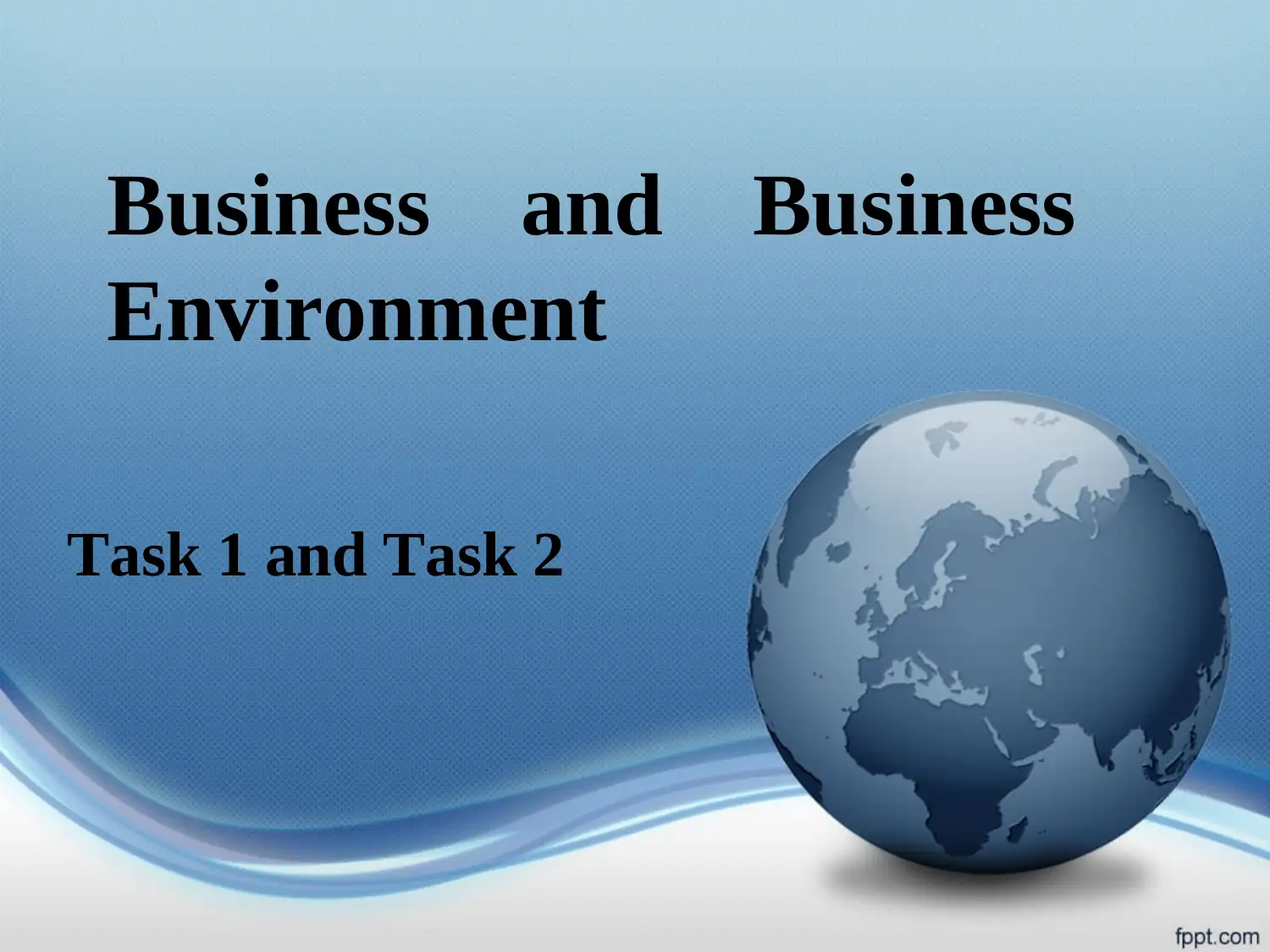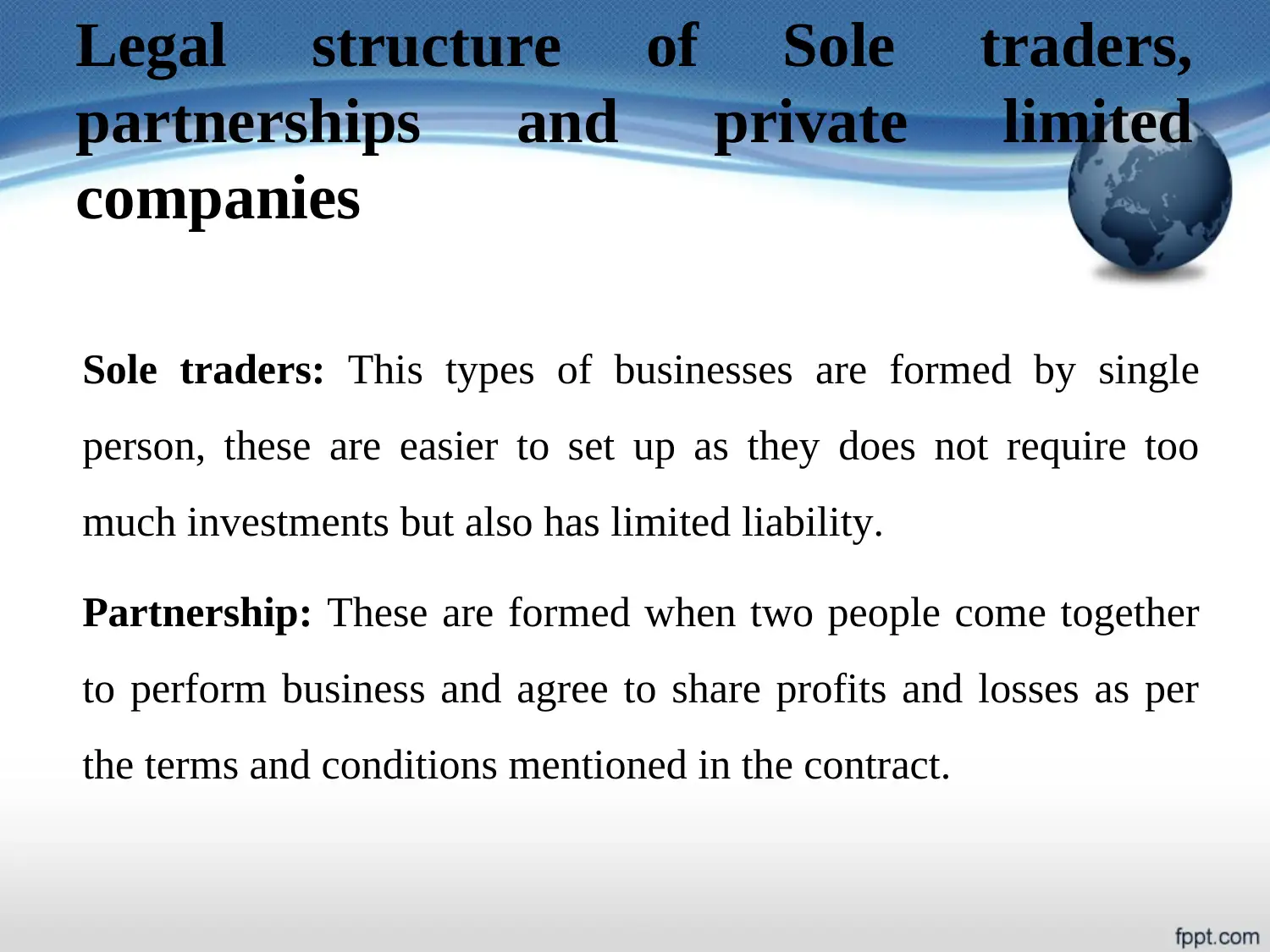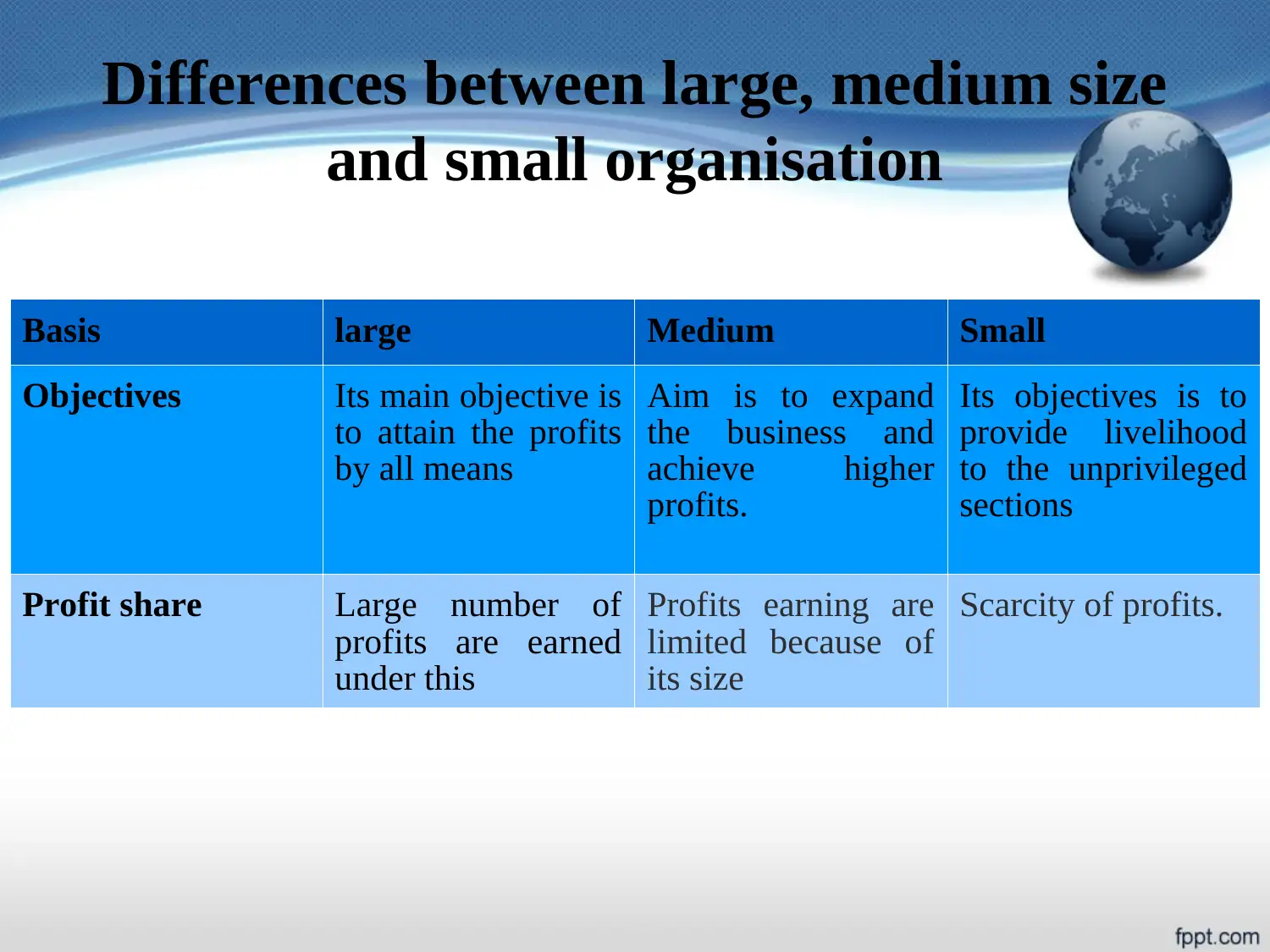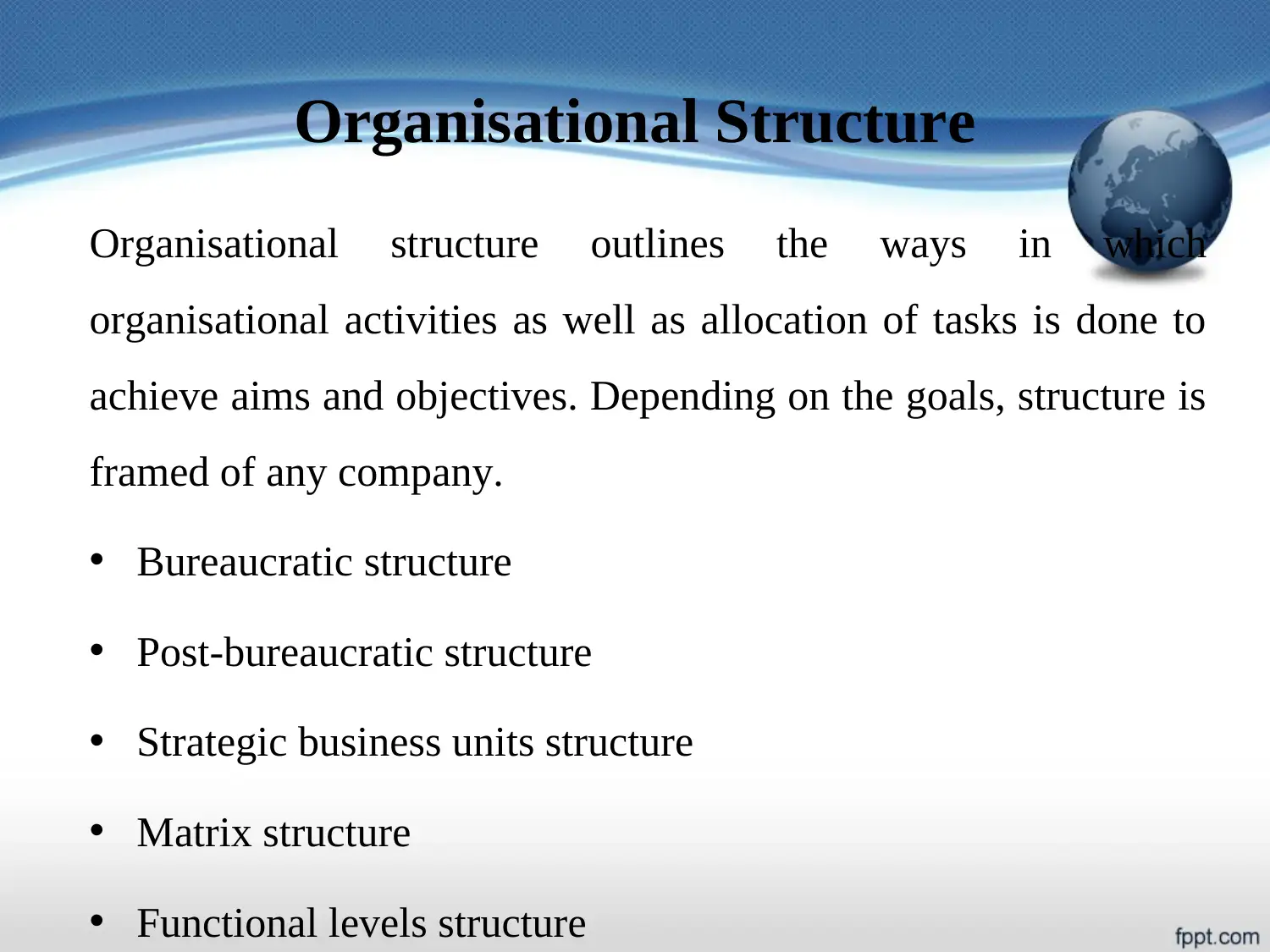Business and Environment Report - Organisation Analysis and Structure
VerifiedAdded on 2023/02/01
|14
|1025
|70
Report
AI Summary
This report provides a comprehensive overview of various aspects of the business environment. It begins by defining the business environment and then delves into different types of organizations, categorizing them based on profit, including private, public, and voluntary organizations, and explaining their objectives. The report also differentiates between micro, small, and medium-sized enterprises (MSMEs), detailing their characteristics and purposes. Furthermore, it explores the legal structures of sole traders, partnerships, and private limited companies, comparing and contrasting large, medium, and small organizations. The report also covers franchising, joint ventures, and licensing, using examples to illustrate each concept. It examines various organizational functions and structures, including bureaucratic, post-bureaucratic, strategic business units, matrix, and functional levels. Finally, it discusses the complexities of transnational, international, and global organizations, offering a complete analysis of the business environment and its components.

Business and Business
Environment
Task 1 and Task 2
Environment
Task 1 and Task 2
Paraphrase This Document
Need a fresh take? Get an instant paraphrase of this document with our AI Paraphraser

Table of content
• Introduction
• Different types and purpose of organisation
• Difference between micro, small and medium size enterprises
• Legal structure of sole trader, partnerships and private limited companies
• Difference between large medium and small organisation
• Franchising, Joint ventures and Licensing
• Various functions within the selected organisation
• Organisational structure
• Organisational structure and complexities
• Conclusion
• References
• Introduction
• Different types and purpose of organisation
• Difference between micro, small and medium size enterprises
• Legal structure of sole trader, partnerships and private limited companies
• Difference between large medium and small organisation
• Franchising, Joint ventures and Licensing
• Various functions within the selected organisation
• Organisational structure
• Organisational structure and complexities
• Conclusion
• References

Introduction
Business and business environment is total collection of all
internal along with external factors which influence the
operations to achieve success. This presentation covers types,
sizes and scope of different organisations. It also elaborates
relationships between various functions as well as
interrelationships and linkage of different functions with
organisational structure.
Business and business environment is total collection of all
internal along with external factors which influence the
operations to achieve success. This presentation covers types,
sizes and scope of different organisations. It also elaborates
relationships between various functions as well as
interrelationships and linkage of different functions with
organisational structure.
⊘ This is a preview!⊘
Do you want full access?
Subscribe today to unlock all pages.

Trusted by 1+ million students worldwide

Different types and purposes of
organisation
Basis Profit ( Private:
Savoy hotel)
Not for profit
(Public: BBC)
Non government
organisation(Volunt
ary: Oxfam)
Definition Profit organisation
are the business
entities that runs to
generate profits
These are the entities
that does not
generates profits for
the owners instead
made to serve public.
Not for profit and
NGO are similar in
nature but differs in a
way that NGO works
solely for the public
cause.
Objective As the name suggest
the main objective of
this sort of
organisation is to earn
profits
The main objective of
not for profit
organisation is to
benefit the members
of the organisation
Its main aim is raise
funds and provides
services to the public.
organisation
Basis Profit ( Private:
Savoy hotel)
Not for profit
(Public: BBC)
Non government
organisation(Volunt
ary: Oxfam)
Definition Profit organisation
are the business
entities that runs to
generate profits
These are the entities
that does not
generates profits for
the owners instead
made to serve public.
Not for profit and
NGO are similar in
nature but differs in a
way that NGO works
solely for the public
cause.
Objective As the name suggest
the main objective of
this sort of
organisation is to earn
profits
The main objective of
not for profit
organisation is to
benefit the members
of the organisation
Its main aim is raise
funds and provides
services to the public.
Paraphrase This Document
Need a fresh take? Get an instant paraphrase of this document with our AI Paraphraser

Difference between micro, small and
medium size enterprises
Basis Micro Small Medium
Definition This are the smallest
unit of business and
less than 10 people
work while the
turnover is £2 million
Under this only less
than 50 people work
and turnover is
around £10 million
This comprises of less
than 250 people and
turnover is £50
million
Purpose The main purpose of
this entity is create
more employment in
the backward area
Surviving for longer
period of time.
Its main aim is to
maximise the business
by acquiring large
market share
Good and
services
Low supply of goods
and services to the
local people
Limited goods and
services but supply is
more than micro
because of the size of
business
Under this goods and
services are even
produced for the
international
audience.
medium size enterprises
Basis Micro Small Medium
Definition This are the smallest
unit of business and
less than 10 people
work while the
turnover is £2 million
Under this only less
than 50 people work
and turnover is
around £10 million
This comprises of less
than 250 people and
turnover is £50
million
Purpose The main purpose of
this entity is create
more employment in
the backward area
Surviving for longer
period of time.
Its main aim is to
maximise the business
by acquiring large
market share
Good and
services
Low supply of goods
and services to the
local people
Limited goods and
services but supply is
more than micro
because of the size of
business
Under this goods and
services are even
produced for the
international
audience.

Legal structure of Sole traders,
partnerships and private limited
companies
Sole traders: This types of businesses are formed by single
person, these are easier to set up as they does not require too
much investments but also has limited liability.
Partnership: These are formed when two people come together
to perform business and agree to share profits and losses as per
the terms and conditions mentioned in the contract.
partnerships and private limited
companies
Sole traders: This types of businesses are formed by single
person, these are easier to set up as they does not require too
much investments but also has limited liability.
Partnership: These are formed when two people come together
to perform business and agree to share profits and losses as per
the terms and conditions mentioned in the contract.
⊘ This is a preview!⊘
Do you want full access?
Subscribe today to unlock all pages.

Trusted by 1+ million students worldwide

Differences between large, medium size
and small organisation
Basis large Medium Small
Objectives Its main objective is
to attain the profits
by all means
Aim is to expand
the business and
achieve higher
profits.
Its objectives is to
provide livelihood
to the unprivileged
sections
Profit share Large number of
profits are earned
under this
Profits earning are
limited because of
its size
Scarcity of profits.
and small organisation
Basis large Medium Small
Objectives Its main objective is
to attain the profits
by all means
Aim is to expand
the business and
achieve higher
profits.
Its objectives is to
provide livelihood
to the unprivileged
sections
Profit share Large number of
profits are earned
under this
Profits earning are
limited because of
its size
Scarcity of profits.
Paraphrase This Document
Need a fresh take? Get an instant paraphrase of this document with our AI Paraphraser

Franchising, Joint ventures and
Licensing
Basis franchising Joint ventures Licensing
Defin
ition
Franchising is sort of
business under which
rights are given to
franchisee to market and
distribute goods and
services
Under this two or
more than two entities
share ownership , risks
and carry out
business activities
together.
This another form of
business under which
licence are given to other
entities to produce goods
and services for specified
amount.
Indus
trial
struc
ture
The structure of
franchise is based on two
how the franchisor wants
its assets to be
distributed in the market.
For example under the
two tiered company
structure KFC co
partnered with Taco bell
to further expand the
business.
By taking automotive
industry as an example
Toyota collaborated
with BMW.
It follows granting
permission to others to
operate business. For
example UK government
authority grant license to
various industries for
performing the operations.
Licensing
Basis franchising Joint ventures Licensing
Defin
ition
Franchising is sort of
business under which
rights are given to
franchisee to market and
distribute goods and
services
Under this two or
more than two entities
share ownership , risks
and carry out
business activities
together.
This another form of
business under which
licence are given to other
entities to produce goods
and services for specified
amount.
Indus
trial
struc
ture
The structure of
franchise is based on two
how the franchisor wants
its assets to be
distributed in the market.
For example under the
two tiered company
structure KFC co
partnered with Taco bell
to further expand the
business.
By taking automotive
industry as an example
Toyota collaborated
with BMW.
It follows granting
permission to others to
operate business. For
example UK government
authority grant license to
various industries for
performing the operations.

Various functions within selected
organization
Organisational function is a process which includes set of
activities performed by different areas or departments in any
business. In any firm various tasks are to be performed, it is the
duty of management to divide all tasks into distinct departments
as per the specialisations which are termed as functions for the
purpose of smooth working to achieve objectives along with
elimination of duplication of work.
organization
Organisational function is a process which includes set of
activities performed by different areas or departments in any
business. In any firm various tasks are to be performed, it is the
duty of management to divide all tasks into distinct departments
as per the specialisations which are termed as functions for the
purpose of smooth working to achieve objectives along with
elimination of duplication of work.
⊘ This is a preview!⊘
Do you want full access?
Subscribe today to unlock all pages.

Trusted by 1+ million students worldwide

Organisational Structure
Organisational structure outlines the ways in which
organisational activities as well as allocation of tasks is done to
achieve aims and objectives. Depending on the goals, structure is
framed of any company.
• Bureaucratic structure
• Post-bureaucratic structure
• Strategic business units structure
• Matrix structure
• Functional levels structure
Organisational structure outlines the ways in which
organisational activities as well as allocation of tasks is done to
achieve aims and objectives. Depending on the goals, structure is
framed of any company.
• Bureaucratic structure
• Post-bureaucratic structure
• Strategic business units structure
• Matrix structure
• Functional levels structure
Paraphrase This Document
Need a fresh take? Get an instant paraphrase of this document with our AI Paraphraser

Organisational structures and
complexities
Transnational organisation: These are complex organisations which
invests heavy money in foreign operations, offers substantial facilities,
performs business in more than one country.
International organisations: Such companies performs activities in
home country by exporting and importing goods and services.
Global organisations: These organisations performs tasks in multiple
countries by figuring out specific company culture to achieve its
objectives.
complexities
Transnational organisation: These are complex organisations which
invests heavy money in foreign operations, offers substantial facilities,
performs business in more than one country.
International organisations: Such companies performs activities in
home country by exporting and importing goods and services.
Global organisations: These organisations performs tasks in multiple
countries by figuring out specific company culture to achieve its
objectives.

Conclusion
This presentation concluded that analysing business environment
is important task for attaining objectives. In this types, sizes and
scope of large, medium-sized and small organisations is covered.
It also includes different functions related to finance, marketing,
human resource management and operations and their
interrelationships with organisational structures.
This presentation concluded that analysing business environment
is important task for attaining objectives. In this types, sizes and
scope of large, medium-sized and small organisations is covered.
It also includes different functions related to finance, marketing,
human resource management and operations and their
interrelationships with organisational structures.
⊘ This is a preview!⊘
Do you want full access?
Subscribe today to unlock all pages.

Trusted by 1+ million students worldwide
1 out of 14
Related Documents
Your All-in-One AI-Powered Toolkit for Academic Success.
+13062052269
info@desklib.com
Available 24*7 on WhatsApp / Email
![[object Object]](/_next/static/media/star-bottom.7253800d.svg)
Unlock your academic potential
Copyright © 2020–2025 A2Z Services. All Rights Reserved. Developed and managed by ZUCOL.





